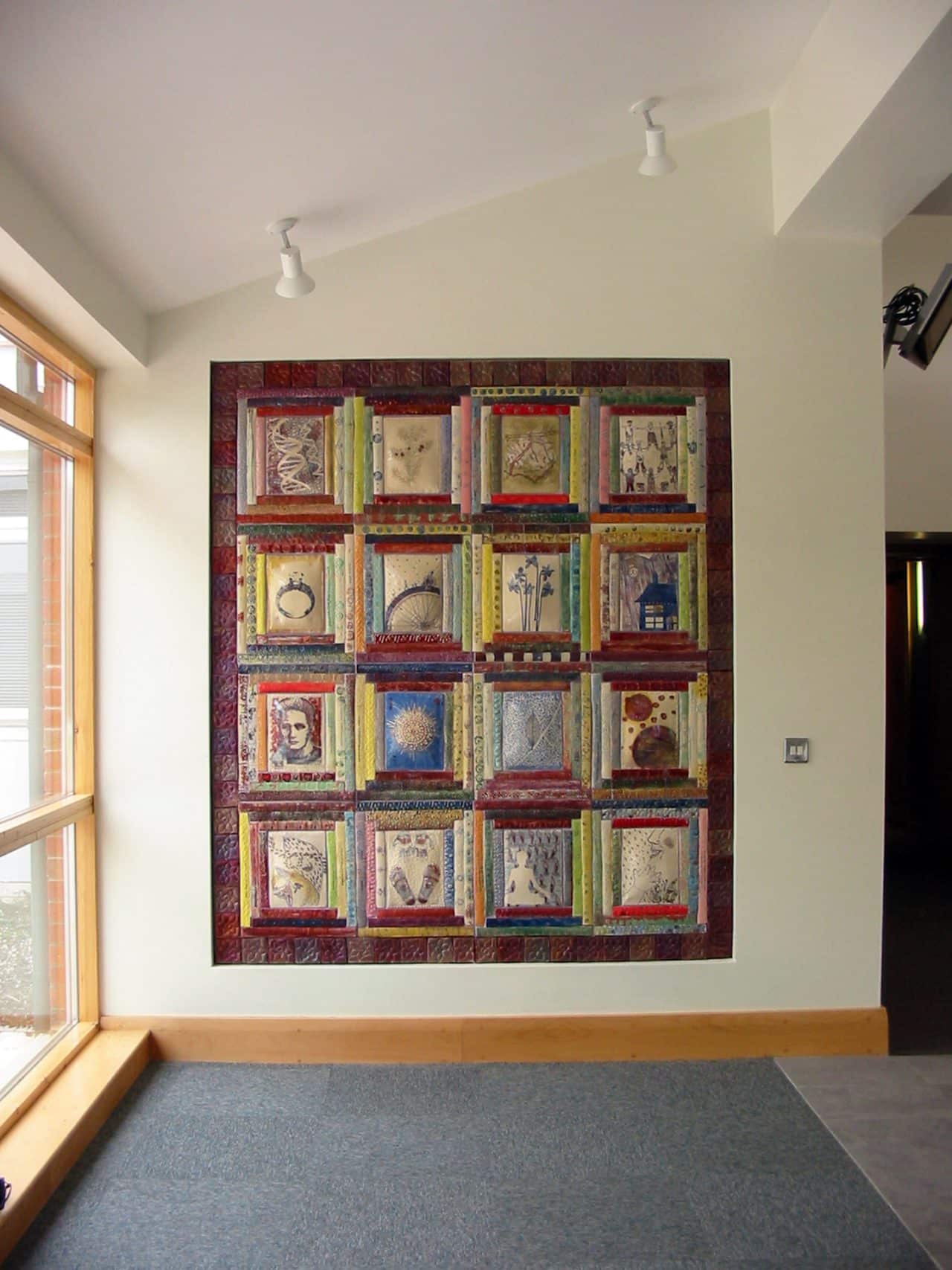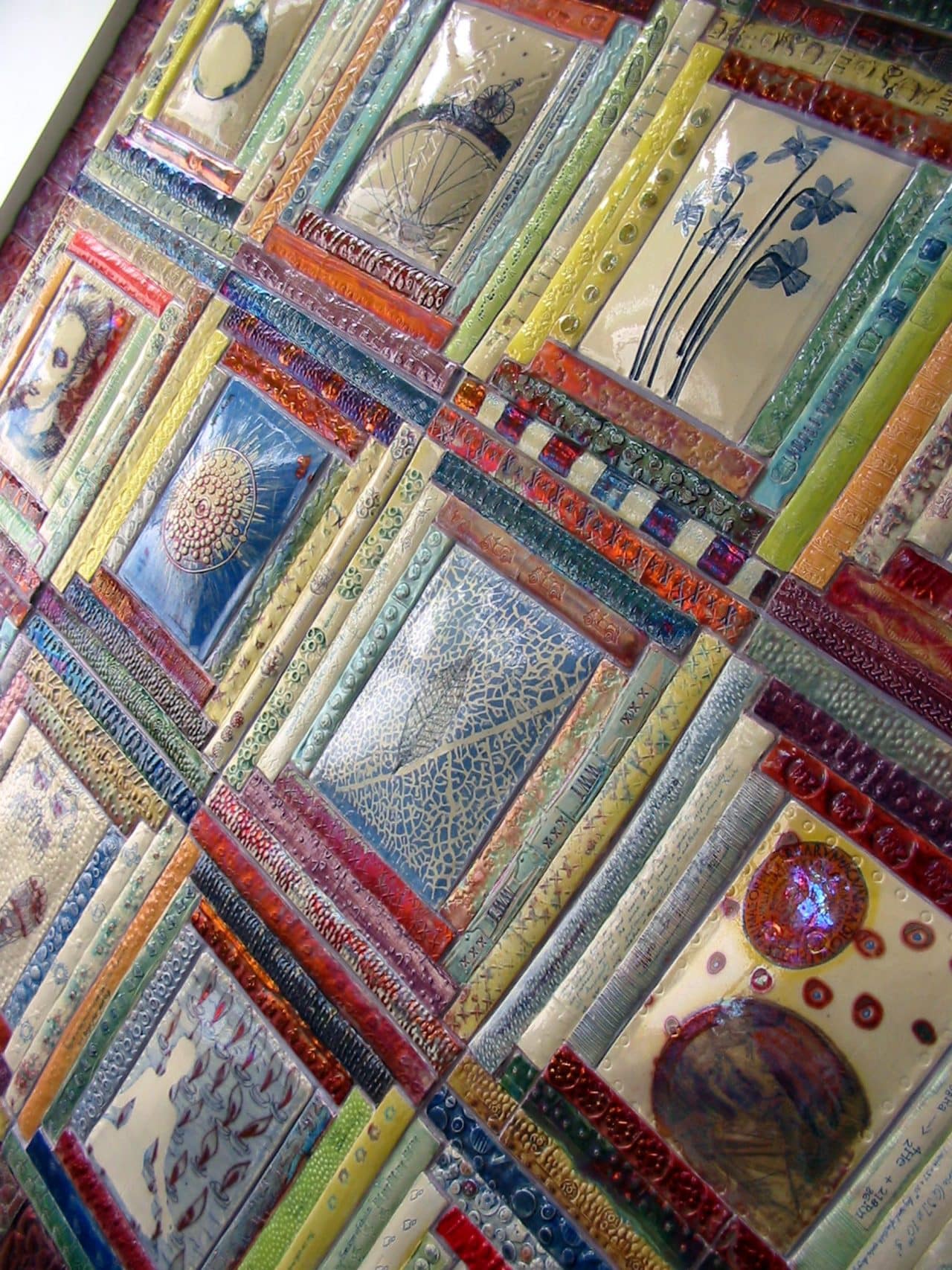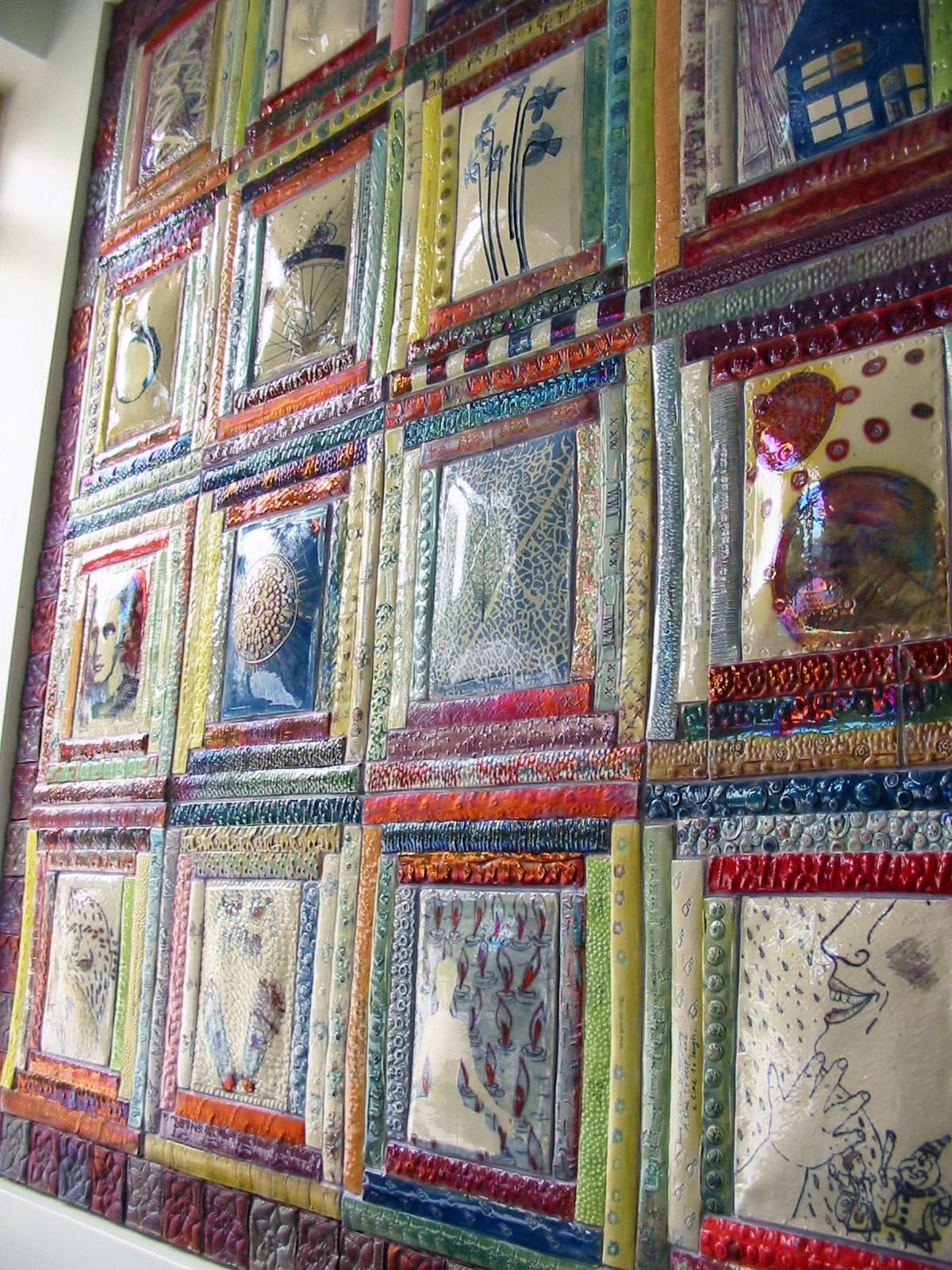
Comfort Quilt 2006
Date: 2006
Dimensions: 2 x 1.8m
Materials: Hand made ceramic tiles, earthenware lustre glaze.
Techniques: Relief ceramic tiles mono printed with ceramic colours and glazes.
Multiple fired to build up layers of colours and textures
Commissioned by: Marie Curie Cancer Care supported by the Arts Council of Northern Ireland
Location: Marie Curie Hospice, Belfast
Architects: Hall Black Douglas
Description:
Concept: Quilts are a traditional blanket given to families and usually made by members and friends of the family. They incorporate old clothing (early recycling) with associations and memories of people passed on.
The Log Cabin Quilt, which this design is based on, is associated with the home, with light and dark strips of cloth around a central square which represents the heart of the home ( Marie Curie nurses come into the home to help care for patients).
This design is made in clay tiles of various sizes, printed and patterned to resemble material and quilting. Each square panel incorporates a central motif to show aspects of the history of Marie Curie, the work done in the Marie Curie units and research into the causes and cures for cancer. Strips around each motif have patterns, textures, words and sayings to illustrate the central panel. Uplifting proverbs and written words (from patients and staff) are printed in this area to give comfort to patients, staff and family. The panel is surrounded by a edge of daffodils.
Panel 1
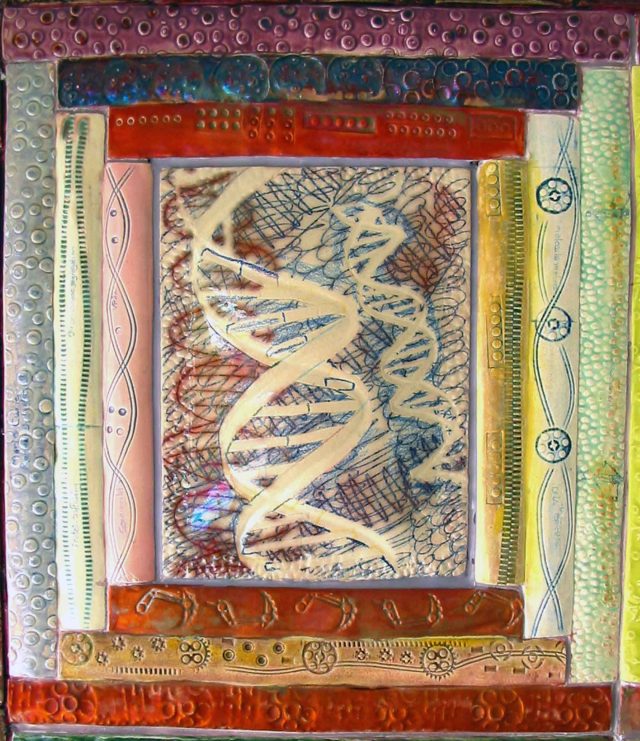
Middle –
- DNA Strands
- Represents the work of the Marie Curie
- Research Centre in Oxsted
Edges – Symbols representing strands of work at the Research Centre
- Molecular motors,
- Signalling and Developmen
- DNA replication
- Gene regulation
- Chromosome segretation
- Protein trafficking
- Virus assembly
- Cell cycle control
- VP22
Panel 2
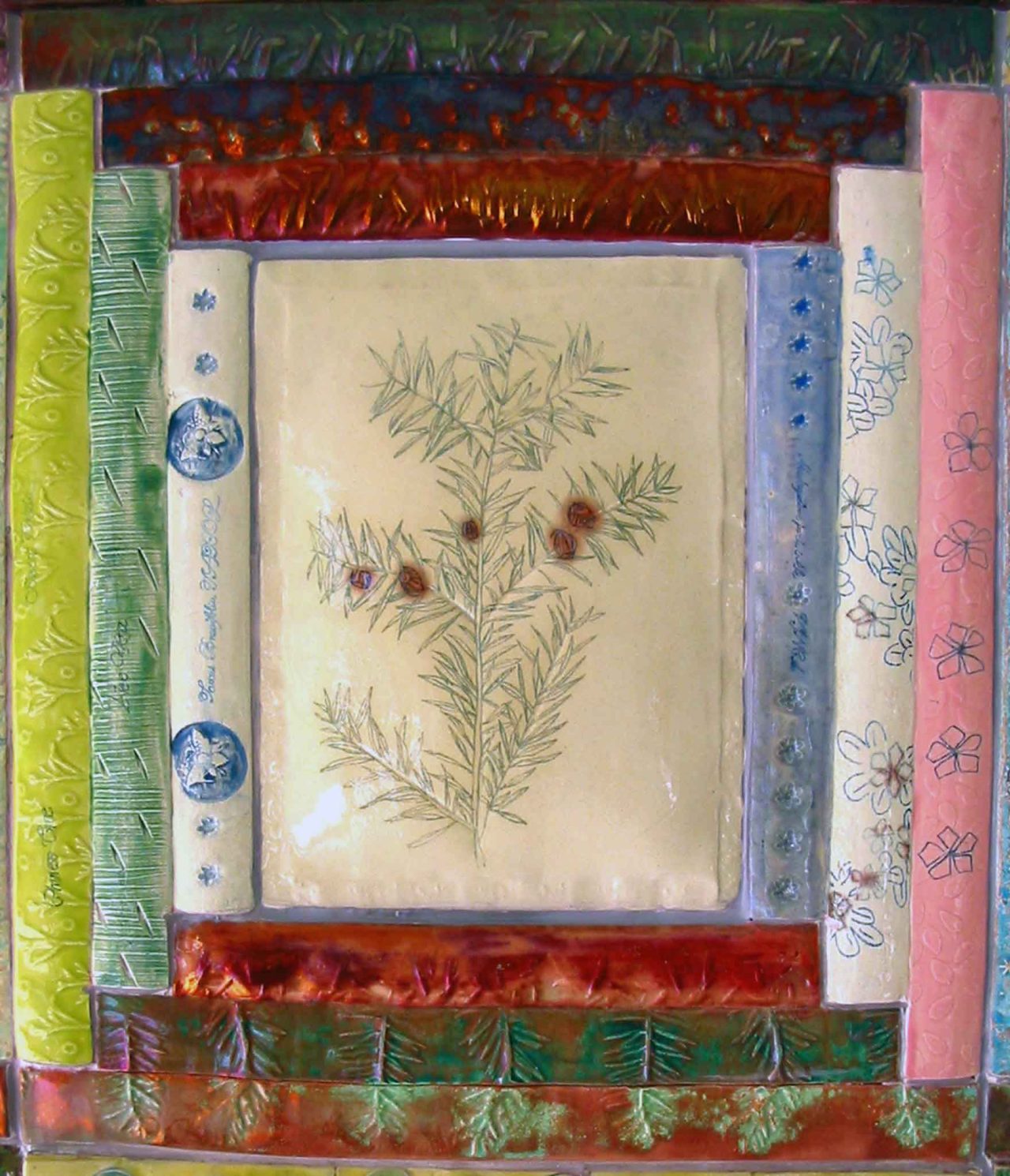
Middle – Yew plant – The leaves and bark are used to make drugs to fight cancer (TAXOL)
Edges – Imprints from yew leaves, Taxus brevifolia -Taxol. Madagascar periwinkle (VINCA), Chinese tree, Aloe Vera, Sweet Potato ( all used to make drugs against cancer)
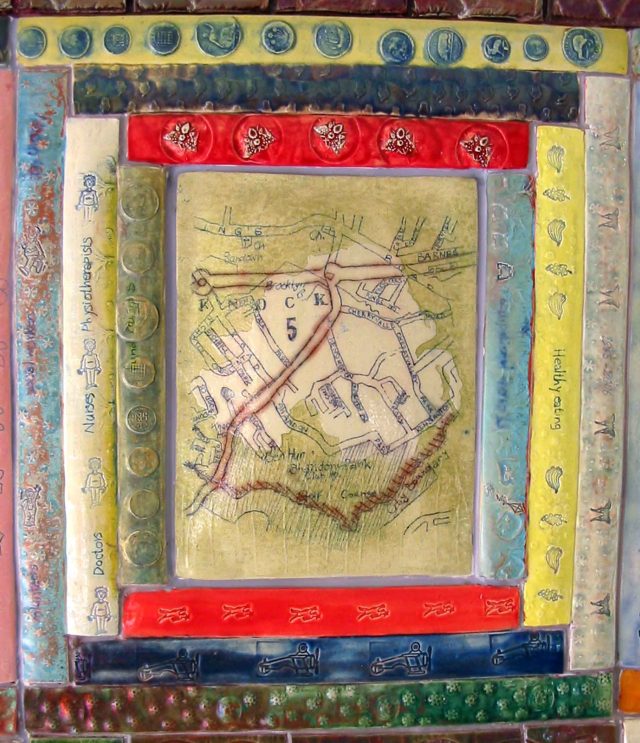
Panel 3
Middle – Map of the location of the Belfast Marie Curie Hospice
Edges – 1965-2006, To represent the work in Belfast. Nurses, doctors, social workers, occupational therapists, physiotherapists drivers, ,healthy eating, pat dogs.
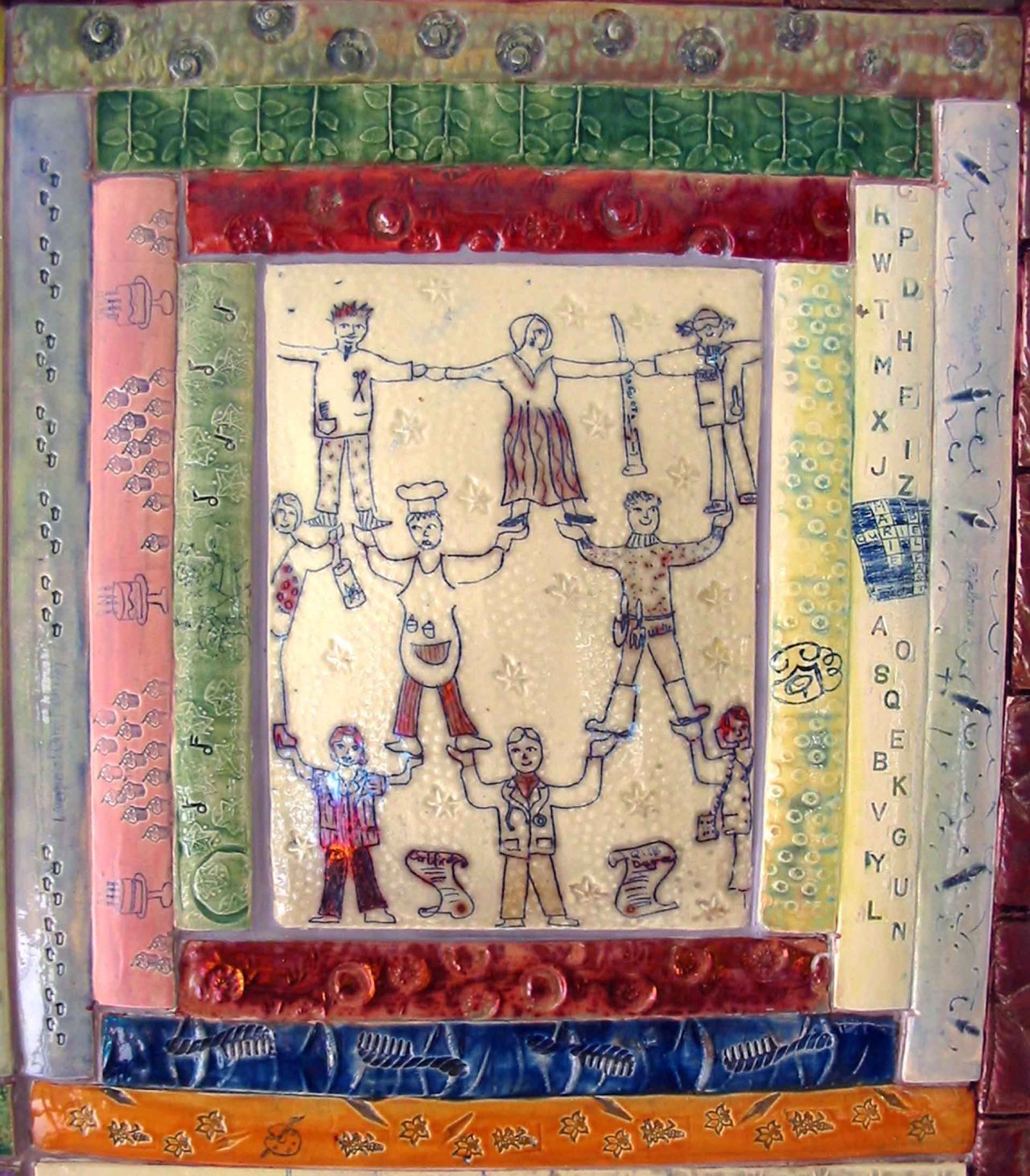
Panel 4
Middle – Staff who support the patients (including nurses , doctors, gardeners, fundraisers, receptionists, musicians, hairdressers, scientists, cooks, volunteers)
Edges – Money (to show benefits) . Degrees and diplomas, crossword, music, hairdressing, cake baking, reading and writing, painting.
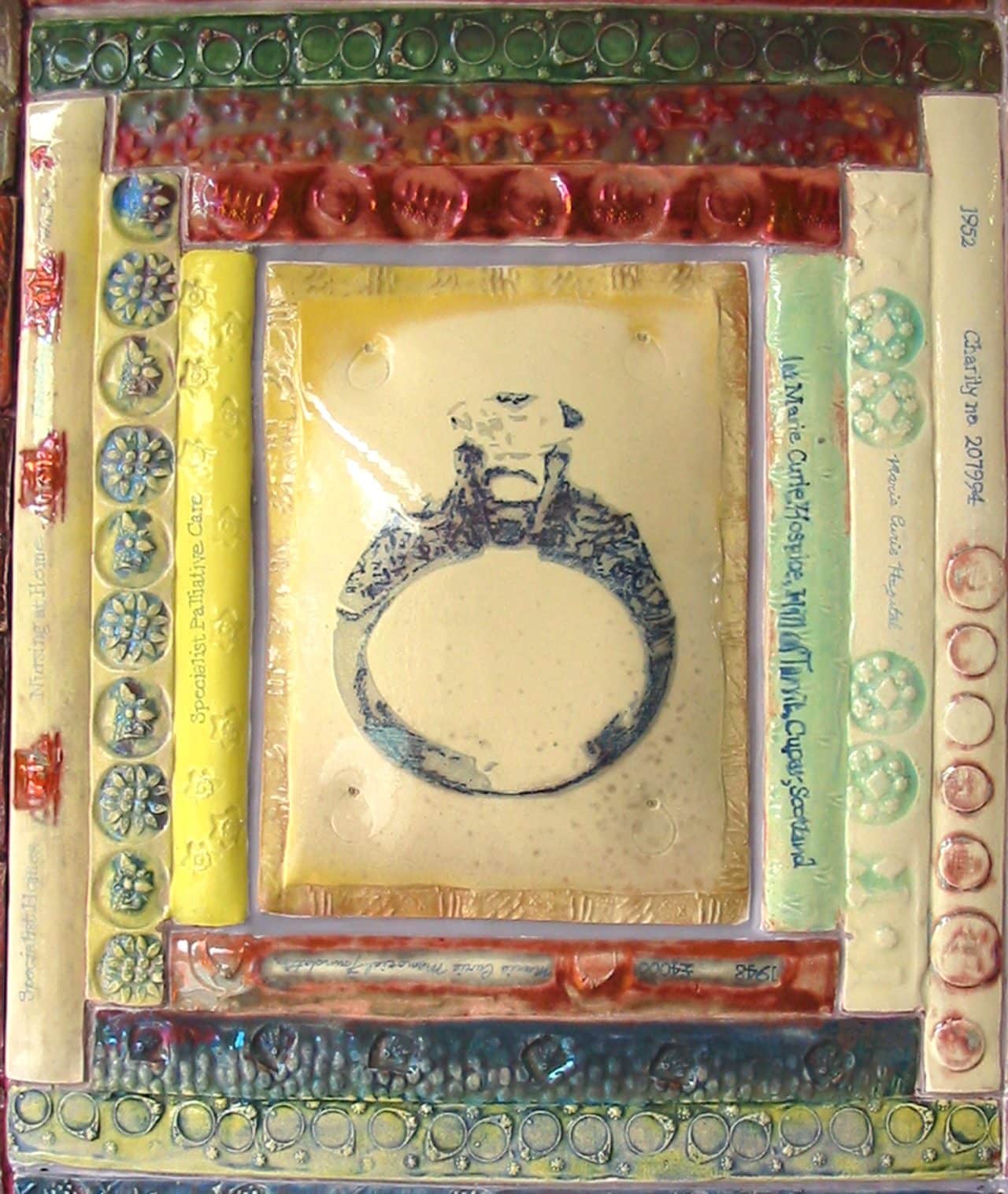
Panel 5
Middle – A donated engagement ring appeal helped launch the first appeal which brought in £4000.
Edges – The Marie Curie Memorial Foundation- the first name of the charity launched in1948, now known as Marie Curie Cancer Care. In 1952 they officially became a charity (no. 207994). Based on a nationwide survey the charity’s work was and still is, to provide specialist homes for cancer patients, provide nursing at home, to educate the public and to provide urgent welfare needs. The first Marie Curie Hospice opened in the Hill of Tarvitt at Cupar in Scotland. Marie Curie also provides specialist palliative care. The relief tiles include an imprinted engagement ring, daffodils, coins and houses.
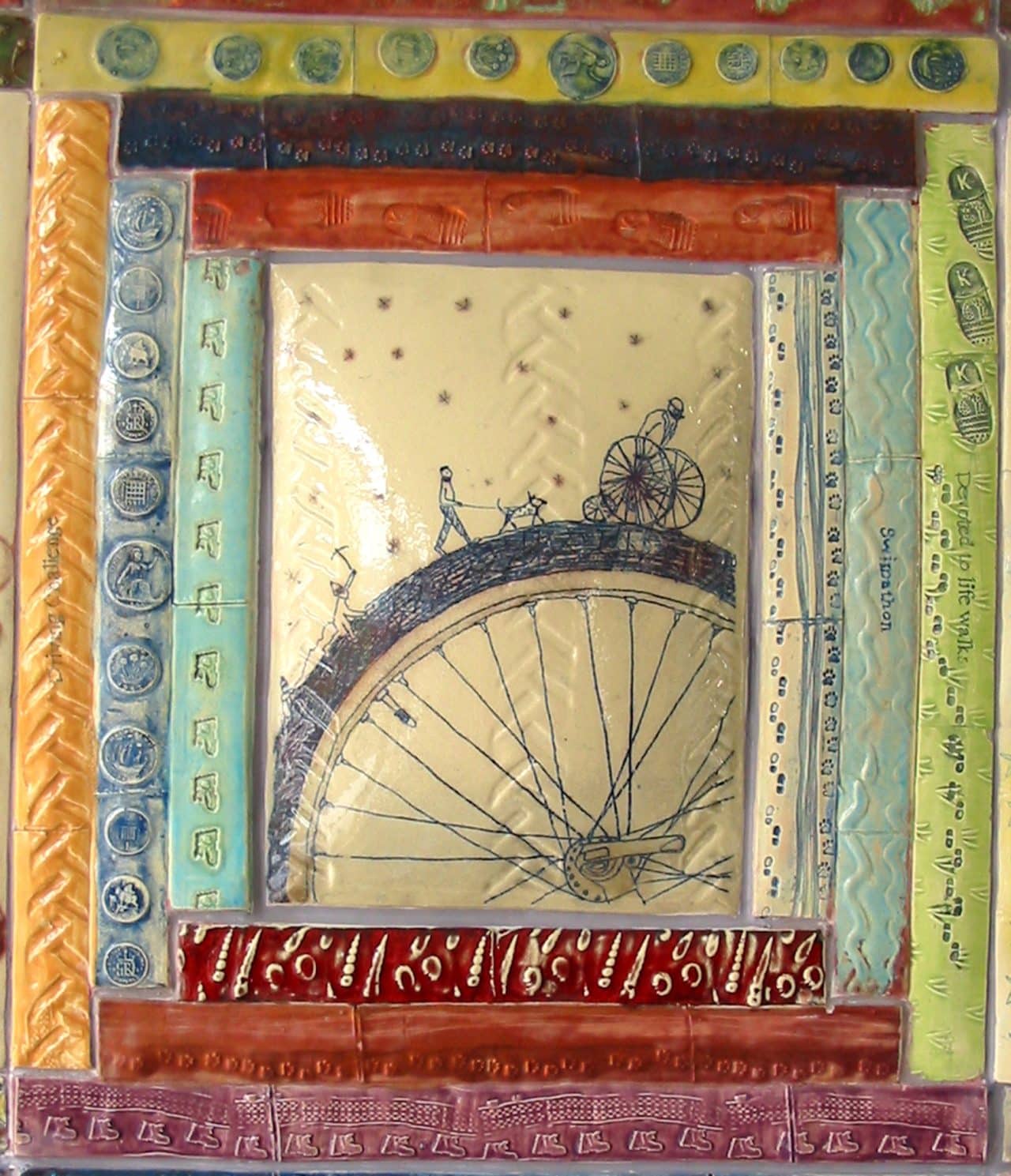
Panel 6
Middle – Fundraising activities ( walks, driving challenge, mountain climbing, cycling)
Edges – Devoted to Life Walks, Swim-a-thon, car tracks, cycle tracks, foot prints, dog prints, waves and coins.
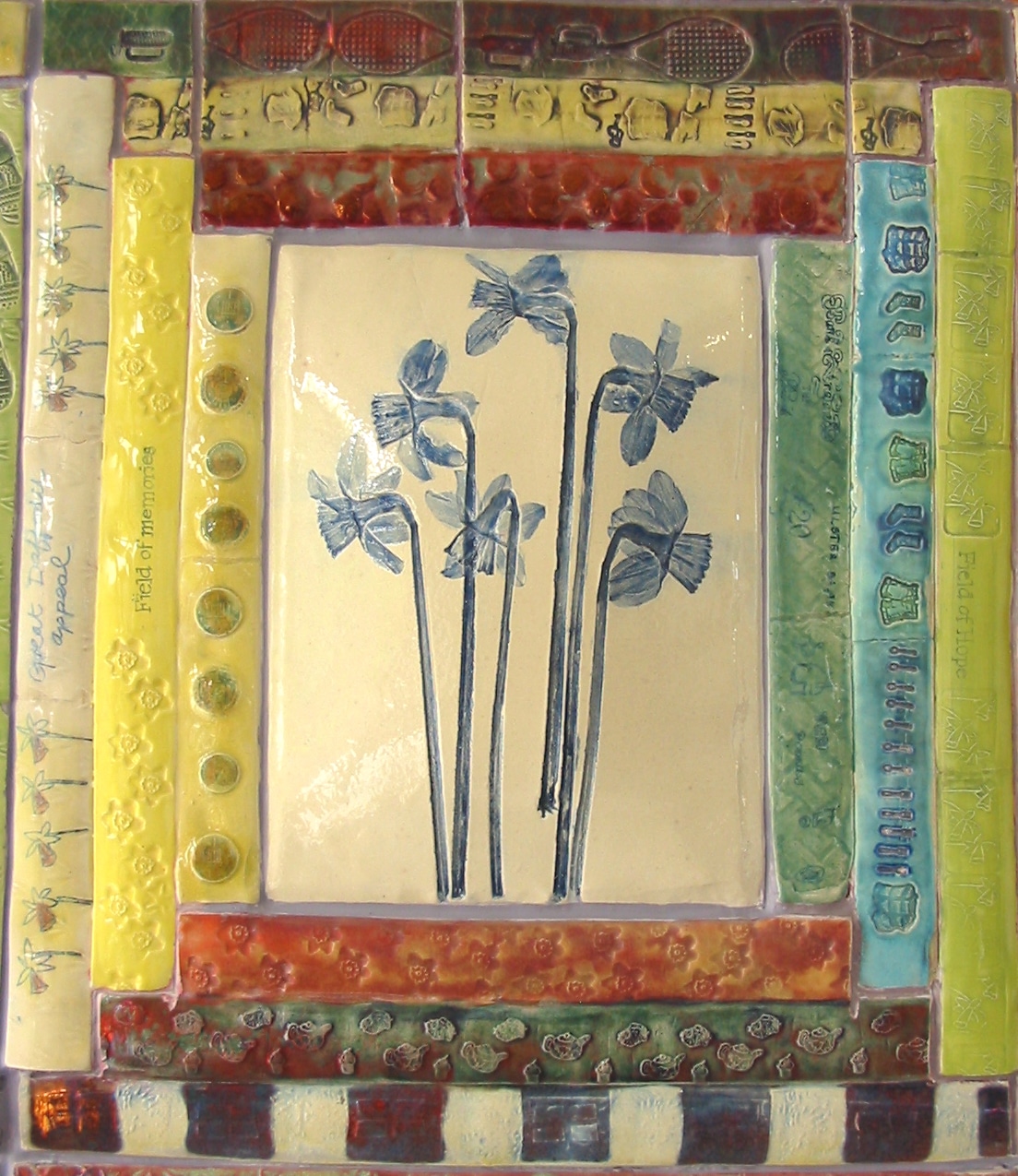
Panel 7
Middle – Marie Curie Cancer Care symbol- The Daffodil, a symbol of renewal
Edges – The various Marie Curie money raisers including The Great Daffodil Appeal, their charity shops ( images of clothes etc.), coffee mornings, tennis tournaments, Fields of Hope and Fields of Memories.
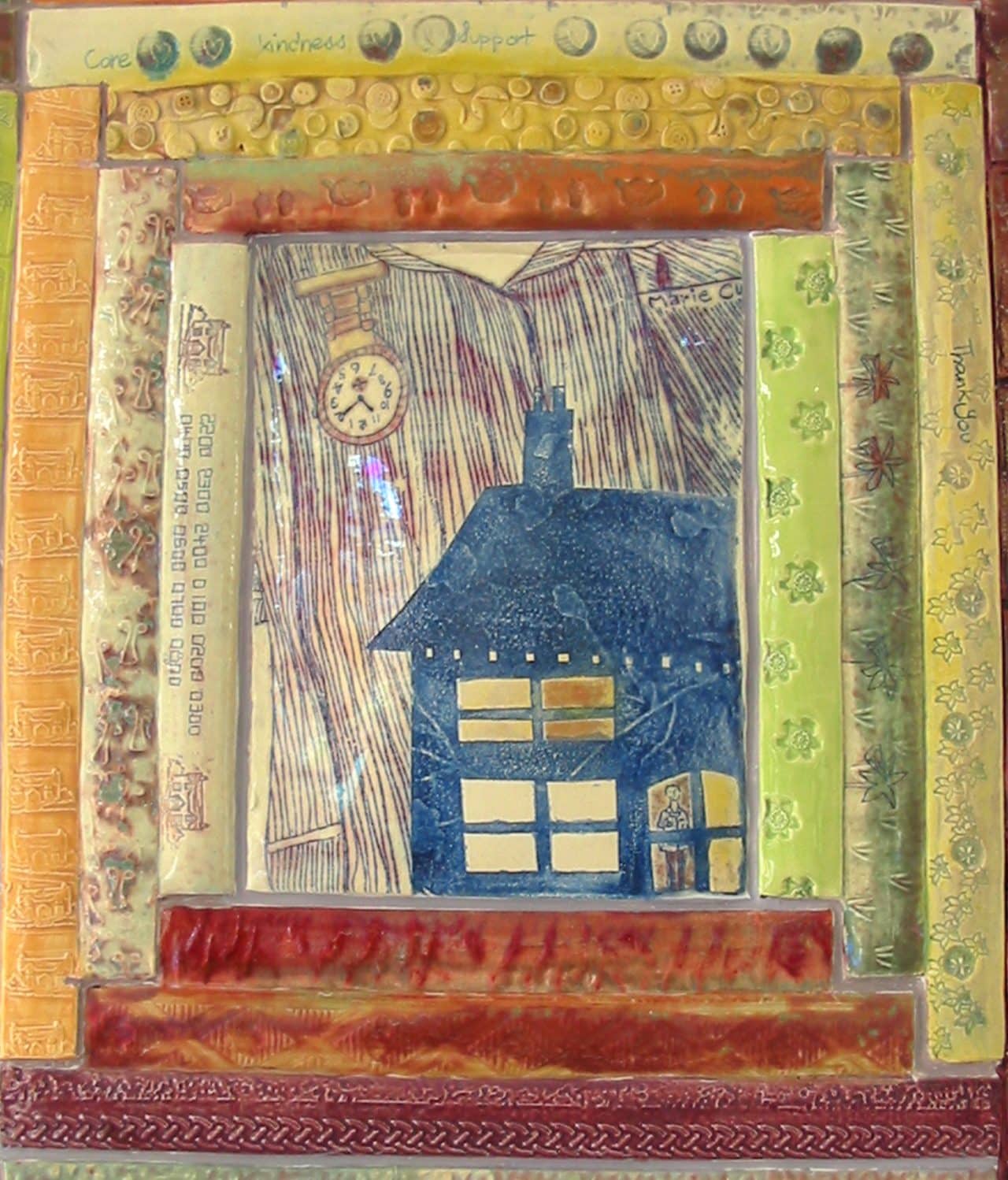
Panel 8
Middle – Nursing at Home. In March 2004 Marie Curie Cancer Care launched its biggest ever policy campaign- Supporting the Choice to Die at Home. This represents the care given by Marie Curie nurses in peoples homes. The background is a Marie Curie nurses uniform.
Edges – A thank-you to the nurses who provide care, kindness and support in the home. Pictures of homes, times on a clock, wallpaper and flowers.
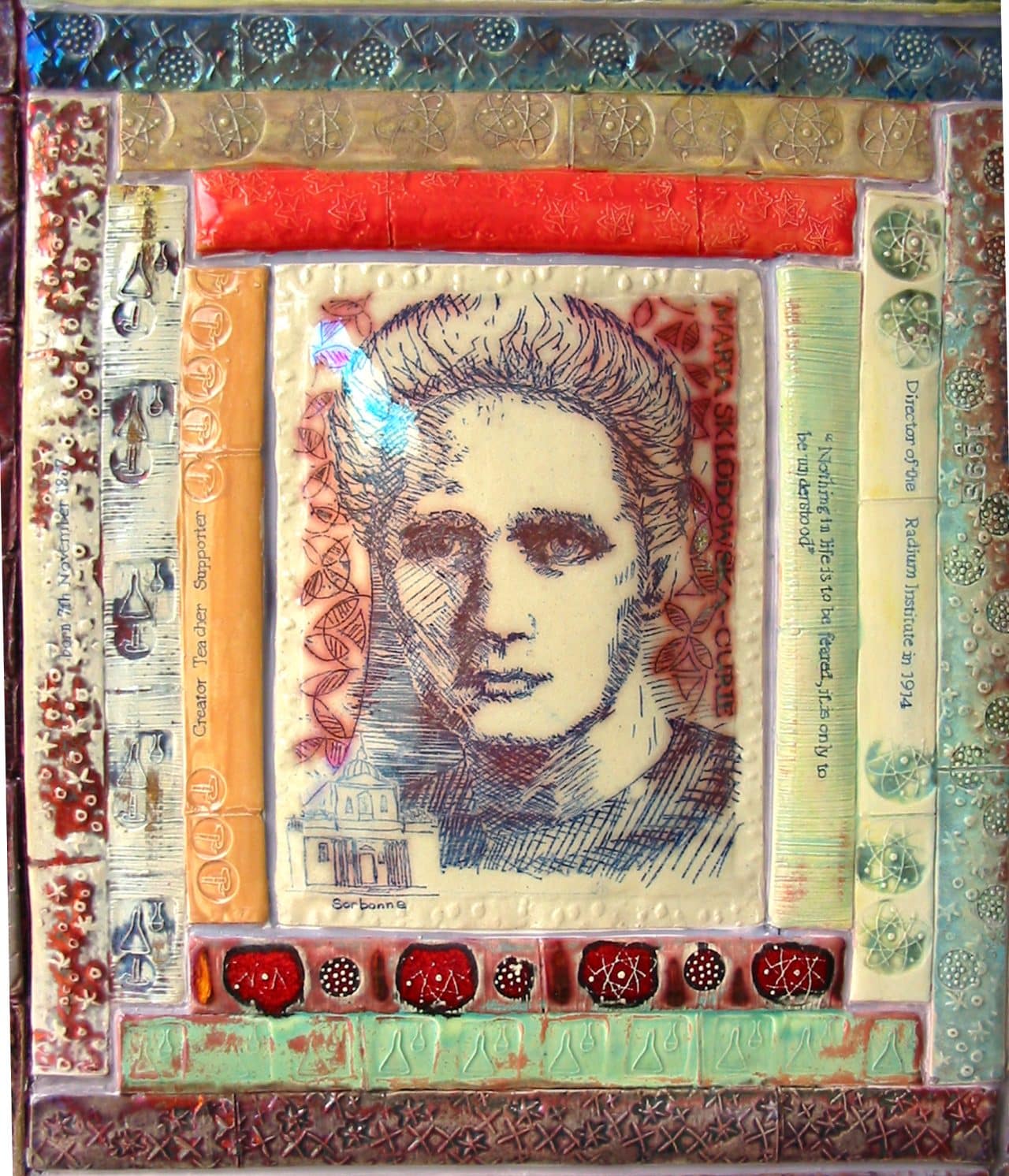
Panel 9
Middle – Marie Curie portrait.
Edges – Maria Sklodowska was born in Poland in 1897 and is remembered for her contribution to the fight against cancer and improving the quality of human life. She read physics and mathematics at the Sorbonne in Paris where she met Pierre Curie marrying him in 1895. Together they worked on the invisible rays given off by uranium (X-rays). She eventually became the Director of the Radium Institute in Paris which was set up to study radioactivity and the treatment of cancer. She died in 1934 from the effects of 34 years of breathing radioactive substances.
The images include apparatus used in a laboratory and the nucleus of an atom.
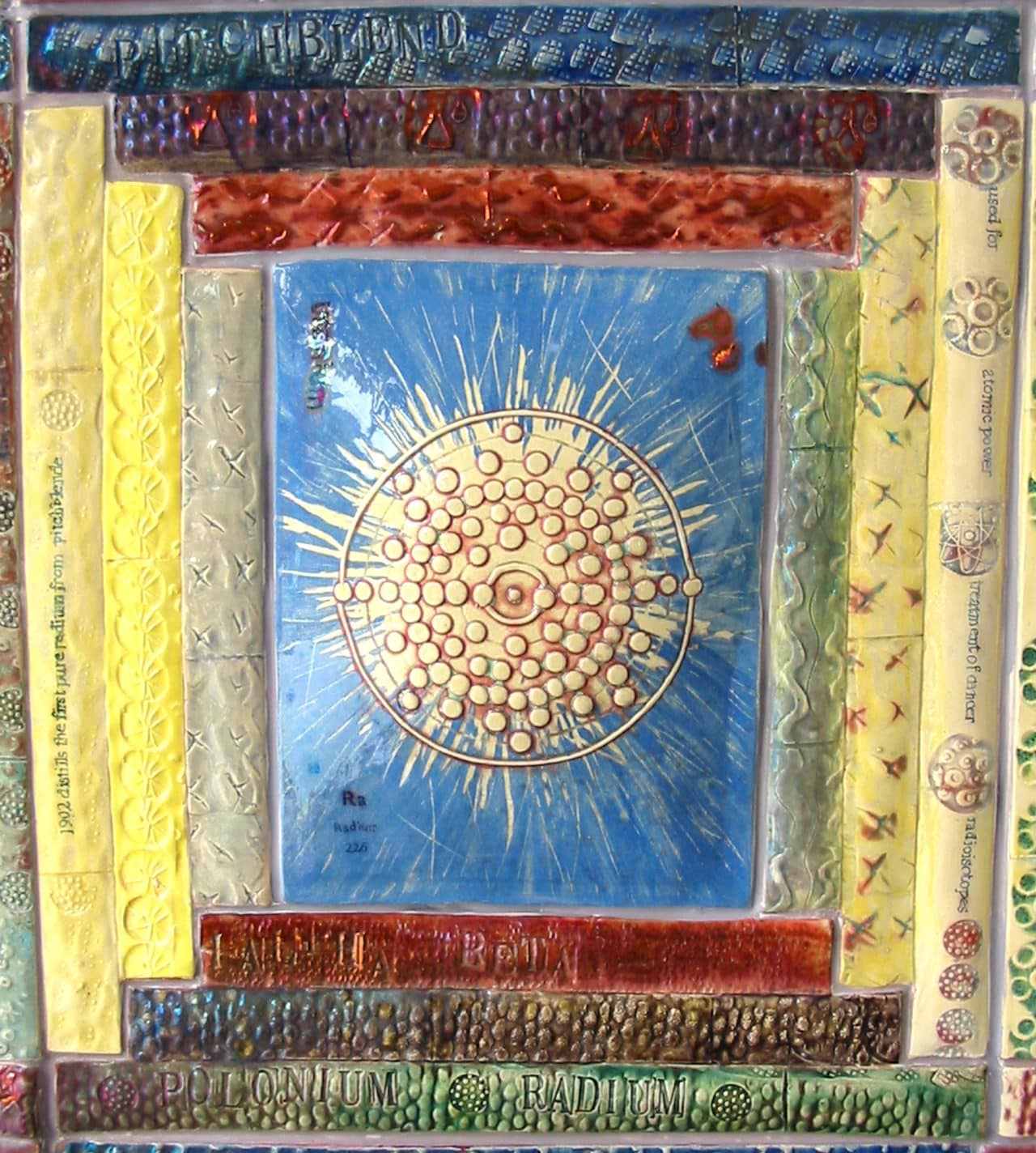
Panel 10
Middle – Representation of an atom of Radium.
Edges – Marie and Pierre Curie discovered two new powerful radioactive elements by separating them from Pitchblende in an exhausting process of grinding ore, boiling and distilling out the separate elements. Polonium was named after her native Poland but Radium was found to be more radioactive and so more important for the science of the twentieth century and work then began on the atomic structure (alpha and beta rays).
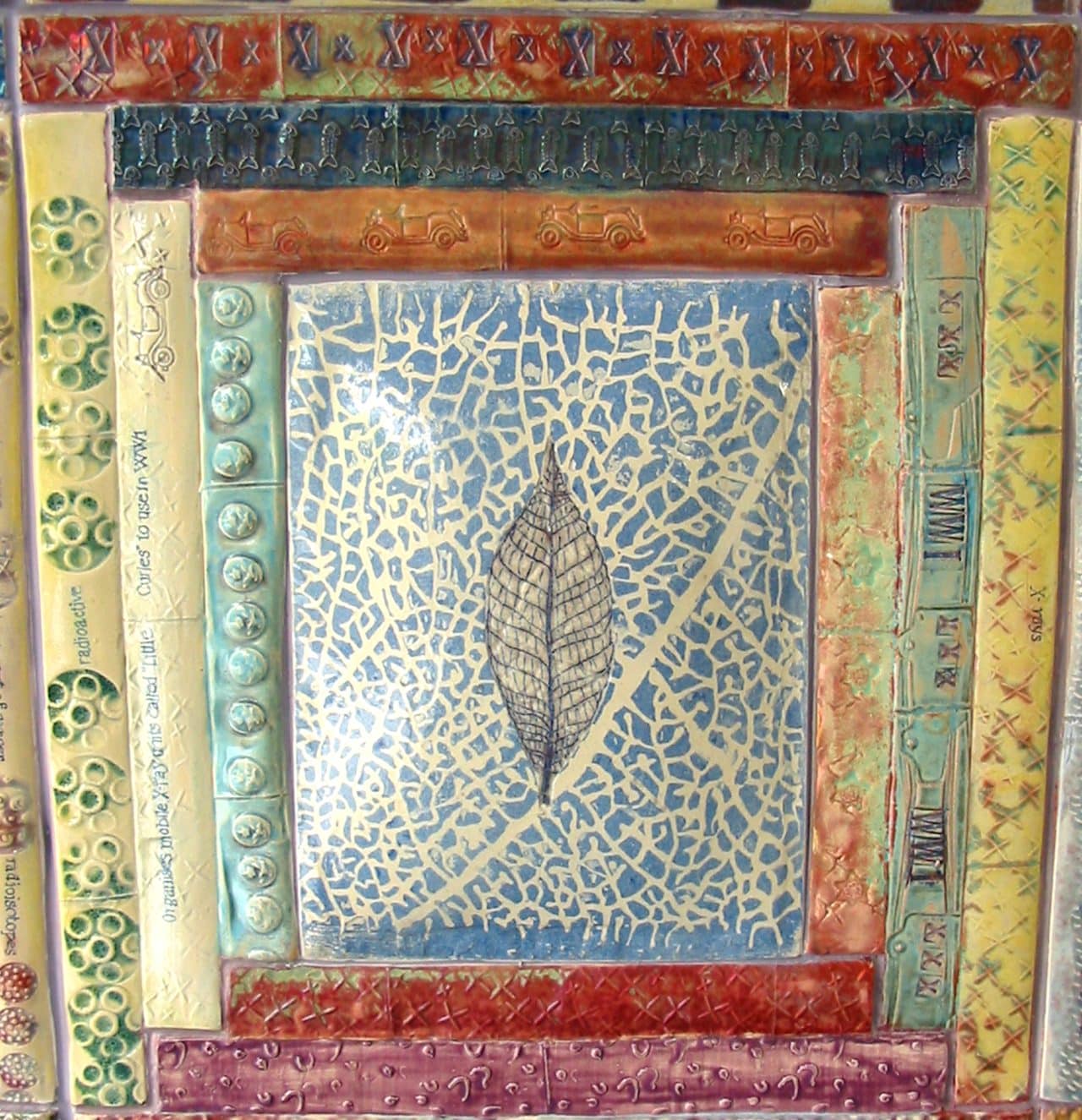
Panel 11
Middle – X-Ray of a leaf and the structure of veins.
Edges – After Pierre’s tragic death in a road accident Marie Curie dedicated herself to her work and during the First World War she and her daughter Irene set up mobile X-Ray units called “Little Curies” to treat wounded soldiers in the field.
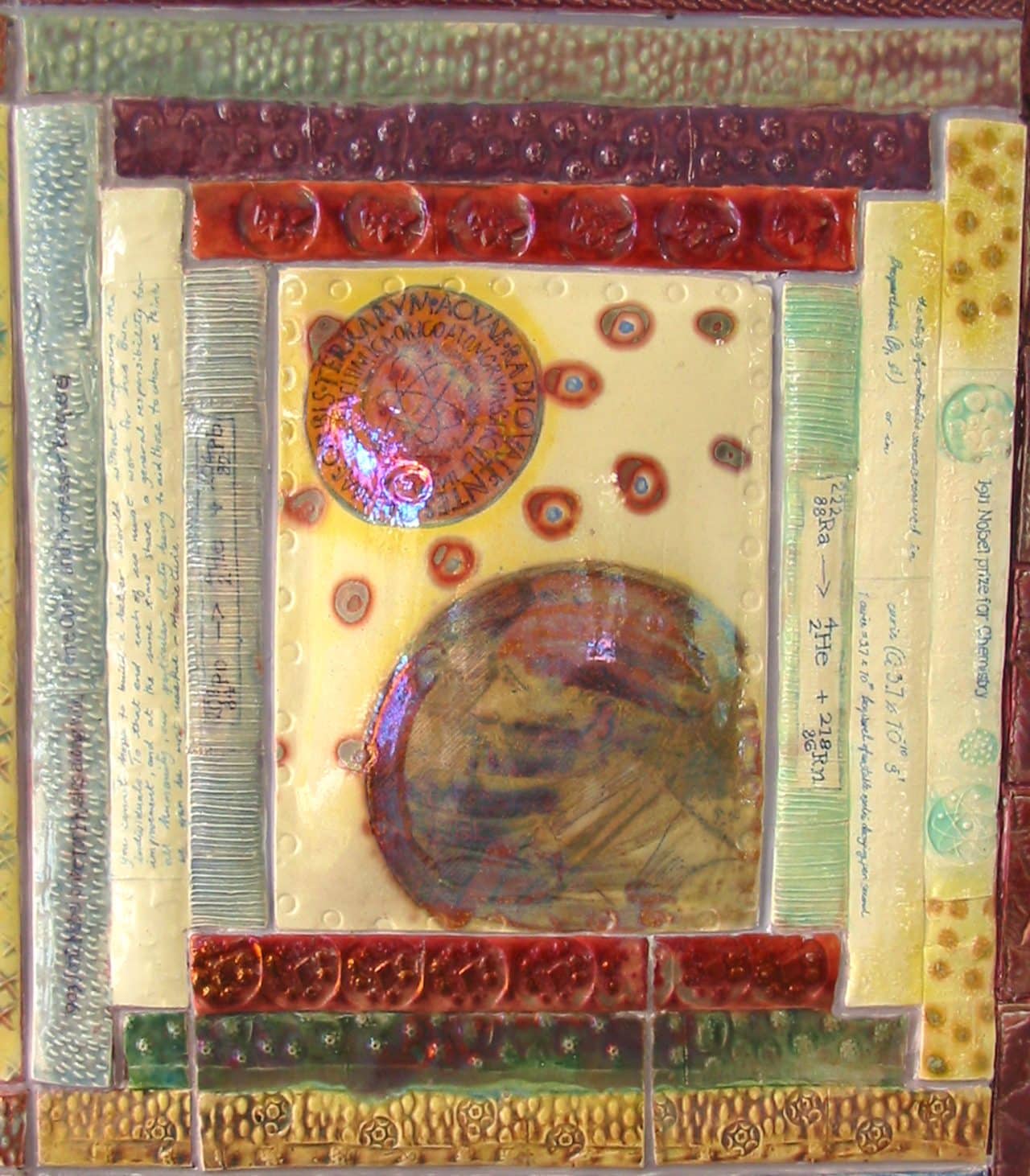
Panel 12
Middle – Nobel Prize
Edges – Marie Curie was the first woman in Europe to receive a doctoral degree but also in that same year she won a joint Nobel Prize for Physics along with Louis Becquerel and Pierre for her work on X-Rays. She was to win another for Chemistry in 1911 for her work on Radium. She began work on one of the uses for Radium, (the cure for cancer) and set up a school of radioactivity at the Sorbonne called the Radium Institute in 1912.
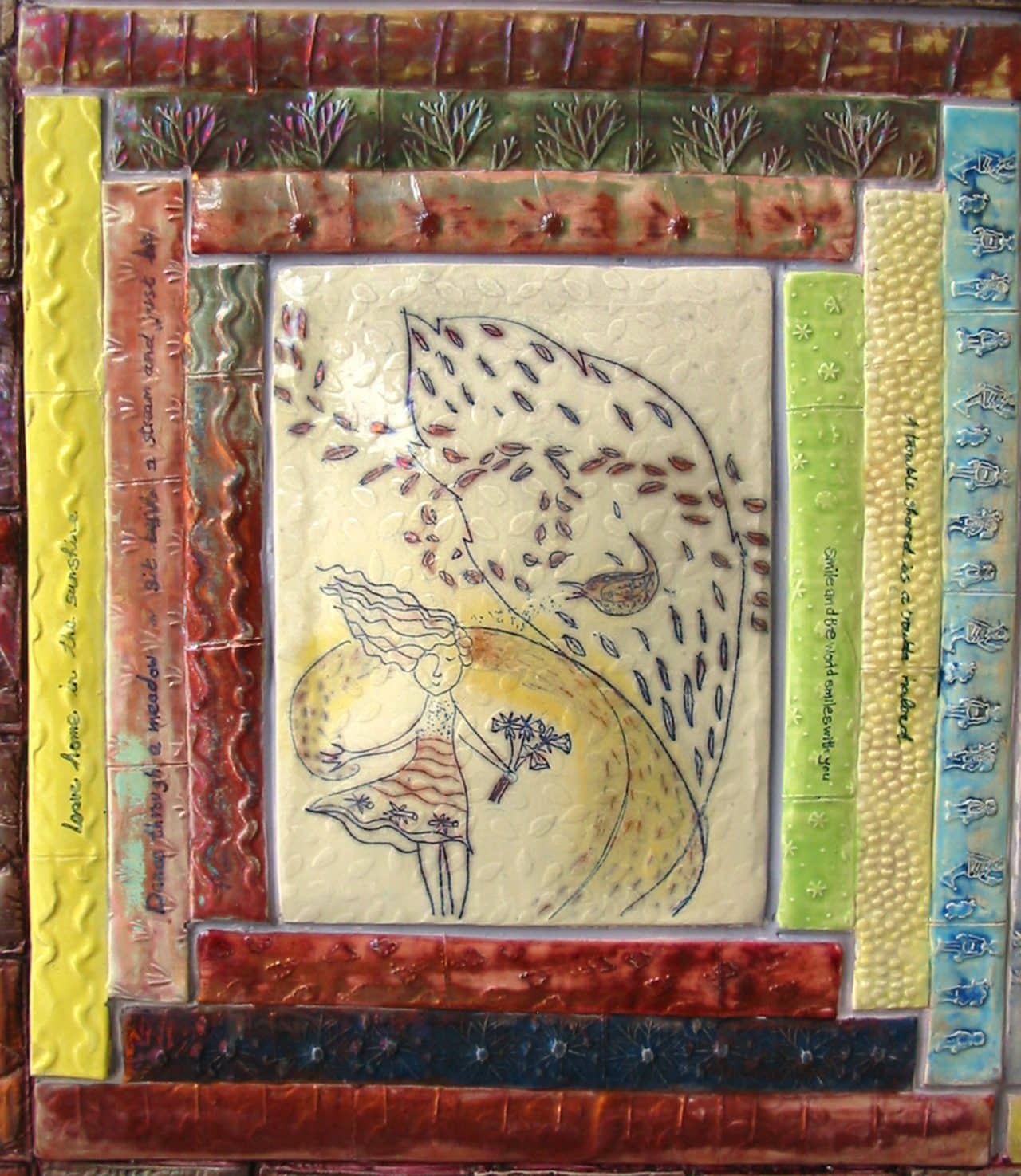
Panel 13
Middle – Feeling the elements.
Edges – Feeling the simple pleasures in life, wind on your face, the smell of flowers, birdsong and the sound of water. This also includes some simple sayings to comfort.
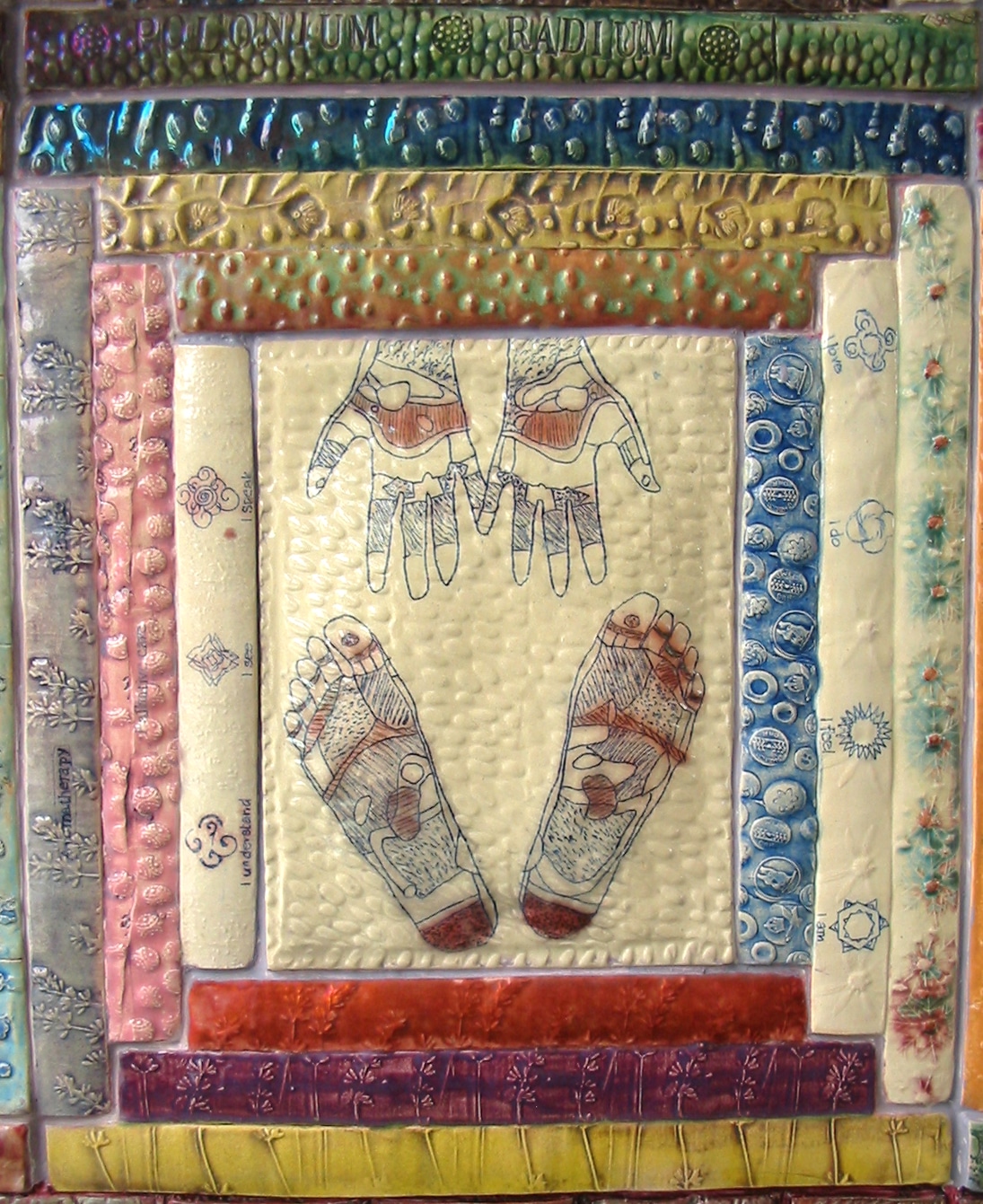
Panel 14
Middle – Reflexology pressure points on the hands and feet.
Edges – Herbs such as lavender used in reflexology are pressed into the edge panels along with a Chakra meditation with symbols to represent feelings.
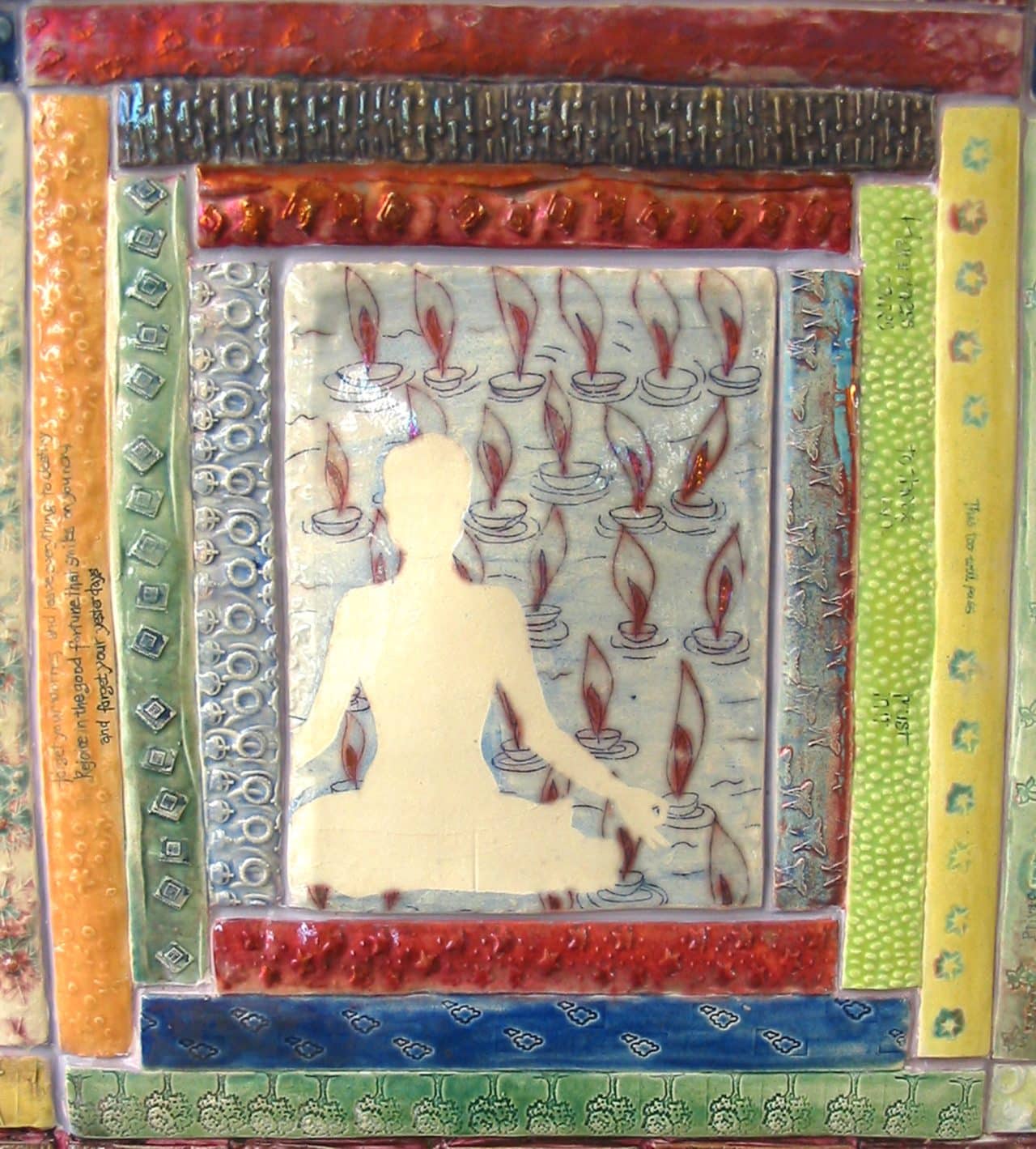
Panel 15
Middle – Spirituality and time to reflect
Edges – “Forget your worries and leave every thing to destiny. Rejoice in the good fortune that smiles on you now and forget your yesterdays.”
This panel reflects on the different ways we can help ourselves to get through difficult times whether through meditation, prayer or by talking to friends.
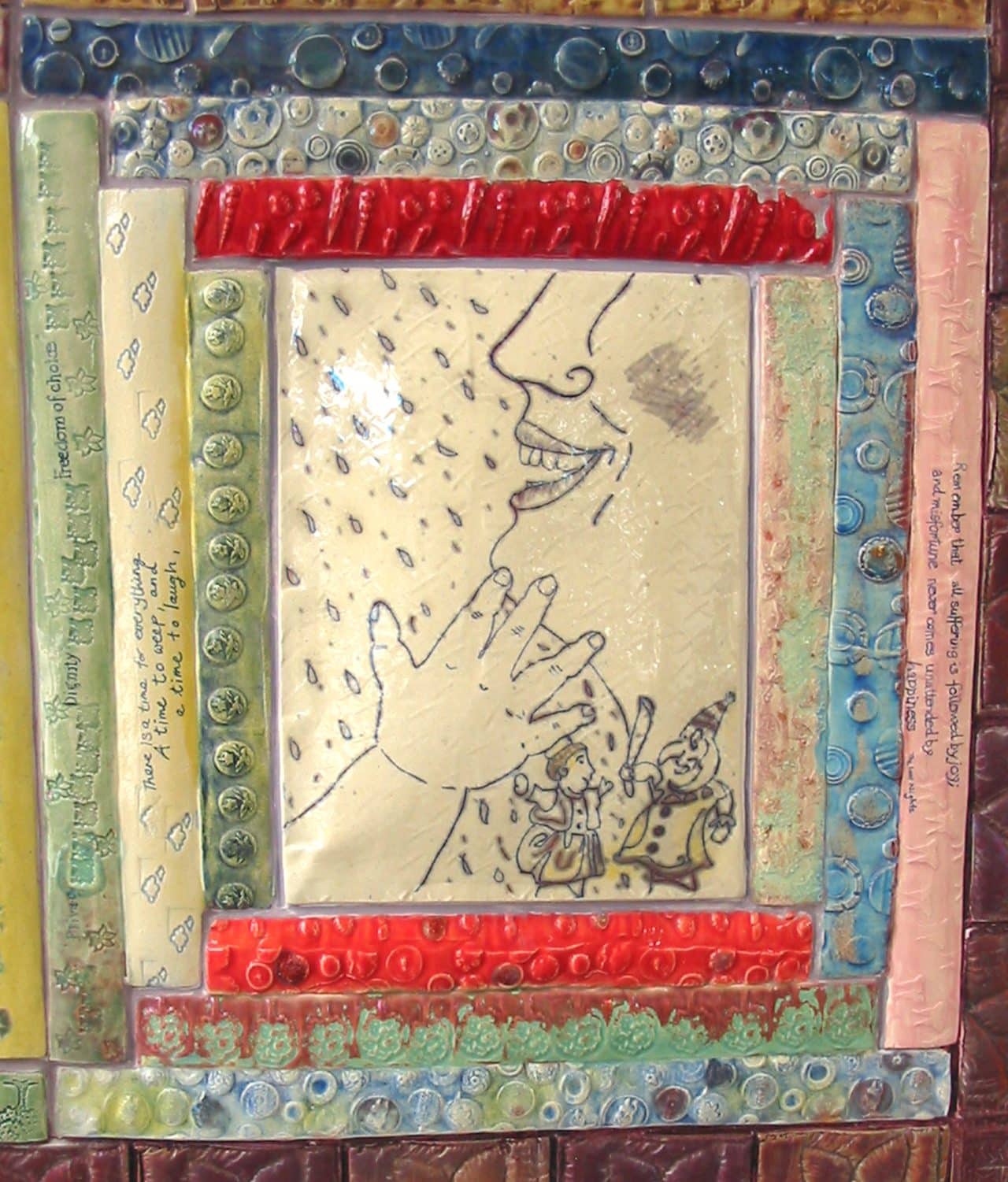
Panel 16
Middle – Tears of joy and sadness
Edges – “ Remember that all suffering is followed by joy and that misfortune never comes unattended by happiness”.
Buttons and puppets are used by staff to talk to children about bereavement.
